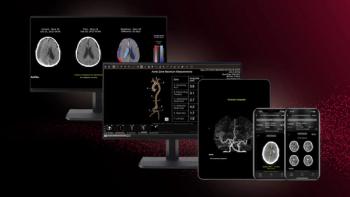
Report of Decreased Growth in ED Imaging
Decreases in imaging growth and CT/MRI use in the ED can be achieved.
Recent decreases in imaging growth and CT and MRI utilization in the emergency department (ED) may be a result of a slowing of new imaging indications, greater adherence to practice guidelines, and increasing use of ultrasound, according to a study published in the
Researchers from the University of California, San Francisco and Massachusetts General Hospital in Boston performed a study to retrospectively review the growth rate of emergency radiology at an urban academic trauma center. Because of the rising costs of imaging and increasing use, and the seemingly continued use of ED imaging, compared with outpatient and inpatient imaging, which have stabilized, efforts have been introduced to reduce ED imaging.
A sharp growth in CT and MRI utilization was seen from 1996 to 2003, when new technology and protocols were introduced. These called for the establishment of new imaging indications. However, there were only refinements after 2003, with no new major clinical indications after 2003.
The review included 1,458,230 diagnostic radiologic examinations ordered for ED visits at one institution from 1996 to 2012. The researchers reviewed aggregated billing data, calculating growth rate as the annual percentage change in imaging examinations per ED visits.
The results showed that the number of visits to the ED increased at an annualized rate of 3%. Total use of imaging increased continuously from 1996 to 2004, but then the rate of growth of CT and MRI decreased significantly. Ultrasound use by ED physicians increased from 2002 (when data became available) to 2011.
This steady decrease of CT and MRI use could be due to three factors, the authors wrote: the slowing of new imaging indications, improved awareness of practice guidelines, and increased use of ultrasound in the ED.
The authors also noted that despite discussions that focus on the growth of imaging in EDs in general, their institution did achieve a decrease in growth.
Newsletter
Stay at the forefront of radiology with the Diagnostic Imaging newsletter, delivering the latest news, clinical insights, and imaging advancements for today’s radiologists.




























